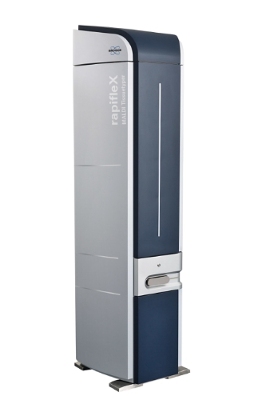Bruker, 3M Expand License Agreement

Complete the form below to unlock access to ALL audio articles.

Bruker today announces that it has expanded its license agreement with 3M for processing of FFPE tissue sections.
Mass spectrometric imaging by MALDI-TOF (MALDI Imaging) is a technology with great potential for many applications in medicine. It is the leading mass spectrometric method for the analysis of tissues, such as Formalin Fixed Paraffin Embedded (FFPE) tissues. Bruker´s MALDI Tissuetyper™ solution makes this technology broadly applicable due to the unprecedented 10 kHz laser speed, robustness and ease of use of the underlying rapifleX™ MALDI-TOF mass spectrometer. The MALDI Tissuetyper enables anatomical pathology research based on multiplexed proteomic profiles and the spatial distribution of proteomic biomarkers on FFPE tissue sections.
The MALDI Tissuetyper is used for the direct, label-free analysis of a wide range of analytes directly from tissue sections. It provides complementary information to currently used routine histology methods. Bruker and 3M have agreed to extend Bruker´s global license for 3M´s patent from research to routine use. This is an important step towards developing future product offerings for anatomical pathology laboratories, including clinically validated content libraries for specific clinical indications. The license rights now cover the acquisition of MALDI spectra from FFPE sections for research and routine applications.
Prof. Dr. Dr. Jörg Kriegsmann, Medical Director of the Medical Service Center for Histology, Cytology and Molecular Diagnostics in Trier, Germany, commented: "In my laboratory we have been working with the MALDI Tissuetyper workflow for some time. Most of the samples in a routine pathology laboratory are FFPE tissues. This is why it is so important to cover the FFPE workflow in addition to the analysis of freshly frozen samples. We see that the MALDI Tissuetyper can complement classical pathology analysis methods, such as hematoxylin-eosin staining and immunohistochemistry. As a first routine application we will start using the MALDI Tissuetyper in our laboratory to analyze degenerative changes of meniscus tissue."
Dr. Wolfgang Pusch, Executive Vice President for Clinical MALDI at Bruker Daltonics, added: "Bruker is the only company offering suitable technology and workflow solutions for the MALDI-TOF investigation of FFPE sections. To add even further value to the MALDI Tissuetyper approach, Bruker is currently establishing collaborations with leading pathologists to develop assays and validated library content for specific clinical indications in anatomical pathology."

